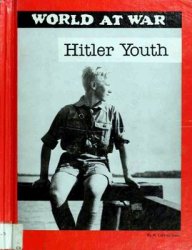Because household membership has been defined as being based on kinship relationships there is a common perception that the actual compositions of households are largely known, relatively standardized, and unchanging phenomena. Perceptions of unproblematic compositions of households stem from assumptions that the head of the household controls the activities and behaviors of ‘his’ [sic] socioeconomic unit. The contributions of the other members to household formation and to its interaction with the community are believed to be mitigated through that household head, and therefore largely unimportant. The complex mechanisms and ideologies that make up the household as a unit of production, reproduction, and consumption have been considered of little consequence. Thus, studies of the internal dynamics and intra-relationships of a household have often been by-passed in investigations of patterns of human social behavior.
However, household dynamics are important factors in the social, political, and economic roles of the household in the wider community, not as a unit but as a system of membership. To understand the social significance of domestic space we need to go beyond the outward presentation of a household as a unit to the inward perspectives of the practical activities of daily life that provide information on members of a household and their relationships to each other. To validate a conception of households as productive entities, there needs to be a well-founded comprehension of what such entities might be composed of - the potential diversities of their internal organization (physical and ideological) both within a society and cross-culturally. In other words, an essential level of inquiry in household archaeology concerns the internal constitution and organization of households themselves. An understanding of the spatial, status, gender, and age relationships within households leads to a better comprehension of the complexity and diversity of the roles of households, as social and productive units in the wider community. Joyce Marcus stressed the need for an awareness of household status differentiation among the assumed homogeneous ‘commoners’ in sixteenth-century Mayan societies - ‘one’ household does not stand for ‘all’ households in a community.
Susan Lawrence studied the ephemeral remains of a mining settlement at Dolly’s Creek in the state of Victoria in Australia which was active from c. 1850s to 1870s. She showed that, while few traces of the actual dwellings remain, the artifacts left behind in these spaces that the dwellings once occupied indicated the diversity of the types of household to be found in what is traditionally considered a male-dominated arena, with rudimentary living standards. She was able to identify evidence for different household types - single men’s dwellings or family dwellings - and to demonstrate the diverse ways in which these households occupied these dwellings and presented themselves. In turn, she could demonstrate that life in such mining settlements was complex, and sometimes ‘gentile’. Lawrence’s findings throw new light on long-held and widely propagated perspectives of the rugged masculine world of early Australia, particularly in mining settlements.




 World History
World History









